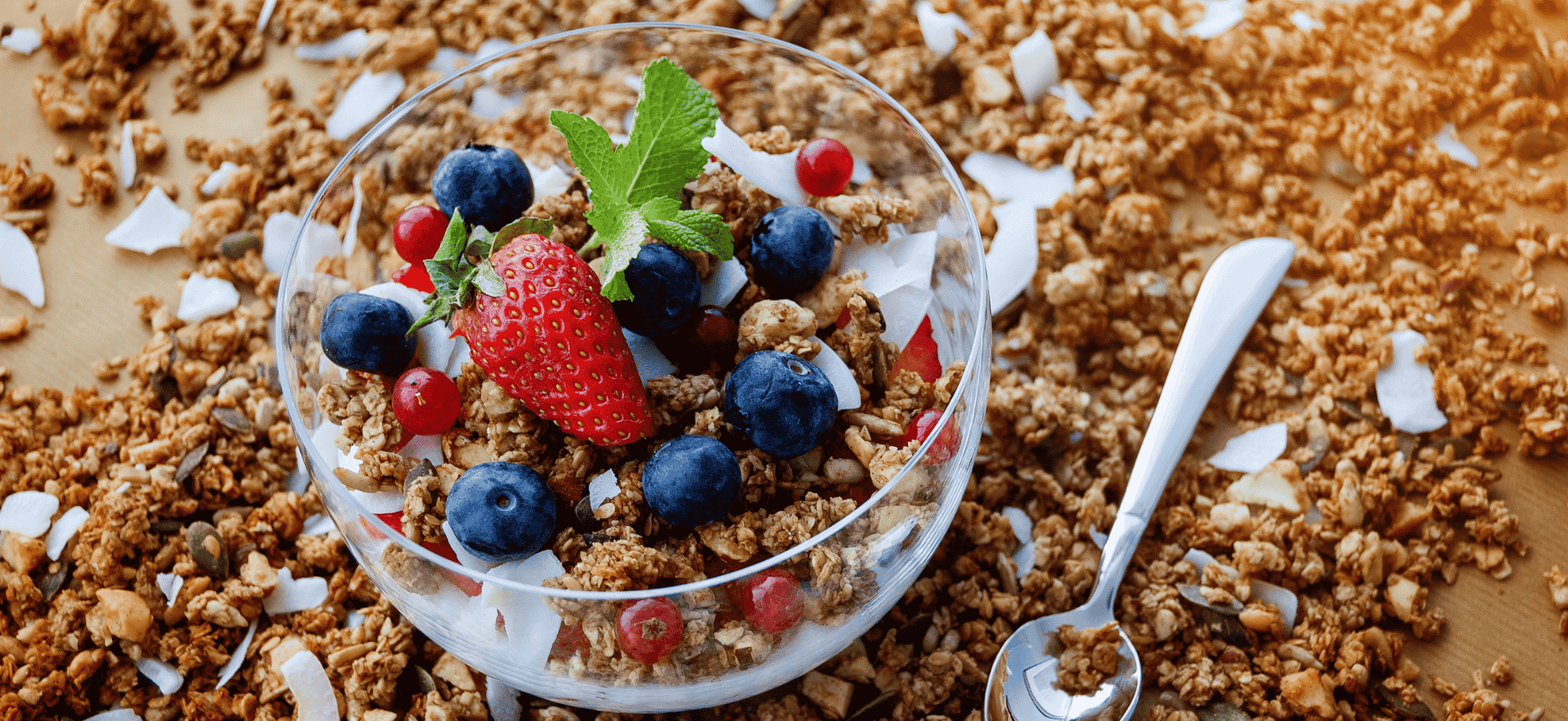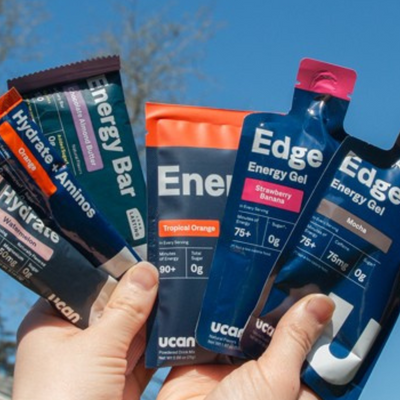By Erin Strout A healthy diet is fuel for life, whether you’re tackling a challenge at work or preparing for a two-hour bike ride. What you eat has a direct effect on your energy and mixing it up is the key. “Combining the three macronutrients—carbohydrate, protein, and fat—in your meals will help you have a more steady energy level throughout the day because you won’t have peaks and valleys in your blood sugar level,” says Bob Seebohar, a board-certified specialist in sports dietetics and former sports dietitian for US Olympic teams.
All three play a crucial role in your physical and mental stamina. Carbs are broken down by the body into glucose, which is used immediately for fuel or stored in the muscles and liver for later. Simple carbs are broken down more quickly, while complex carbs are digested more gradually and have a less dramatic impact on blood sugar. Protein is broken down into amino acids used to build muscle and support the nervous system and brain, and proteins are responsible for transporting glucose, oxygen, and other nutrients in the bloodstream. The body relies on fat as an additional energy source when your muscles have burned through stored glucose (glycogen), and fat is part of all cell membranes and vital for cell signaling, which is important for normal cell functioning.
Protein and fat also help slow the breaking down of carbs into glucose, which helps prevent blood sugar spikes and crashes. “The number one way to fight fatigue is to maintain stable blood sugar,” says Julie Burns, a licensed and registered dietitian, integrative sports nutritionist, and team nutritionist for the Chicago Blackhawks.
Find the Right Ratio to Balance Your Blood Sugar
The ideal amount of carbs, protein, and fats you should consume depends on factors like your activity level, your weight, and your total daily calories. The dietary guidelines for Americans recommend that adults get 45 percent to 65 percent of their daily total calories from carbs, 10 percent to 35 percent from protein, and 20 percent to 35 percent from fat.
Seebohar recommends a simpler approach to best maintain blood sugar, the key to boosting energy: Strive for between a 1:1 and 2:1 ratio of grams of carbohydrates to protein. Because fat is already present in most protein sources, it’s not always necessary to factor it into the equation, he says. (Just make sure the protein source—and the fat it contains—is lean and high quality.)
A good way to figure out if your portions are on target is to look at your plate: If you’re going for the 2:1 ratio, make certain that two parts of the meal contain complex carbs and the remaining one part is protein, Seebohar says.
When planning meals and snacks, focus on complex carbs (whole grains, vegetables, and some fruits like apples and berries) along with protein (poultry, fish, nuts, seeds, legumes, and beans), and healthy fats (from nuts and nut butters, fish, olive oil, and avocados). “Bad” fats include saturated and trans fats—the kind that increases LDL cholesterol and the risk of heart disease— found in processed foods, fatty cuts of meat, and fried food. “Good” fats can be either monounsaturated or polyunsaturated.
Although fats have more calories than carbs or protein—every gram of fat has 9 calories as compared with 4 calories per gram of carbs and protein—they help keep you feeling full.
Don’t Forget Your Vitamins and Minerals to Maximize Energy
In addition to considering the macronutrients in your diet, make sure you’re including crucial micronutrients, too. Athletes and women, in particular, need plenty of iron to fight fatigue. The best sources of iron are high-quality, lean animal protein, including beef, lamb, bison, and shellfish. Potassium (found in avocados, spinach, sweet potatoes, and bananas) supports cell function as well as muscle and nerve function. Magnesium (found in avocados, dark leafy greens, nuts, chia, pumpkin seeds, and dark chocolate containing at least 70 percent cacao) supports hundreds of functions, including regulating blood sugar as well as heart, muscle, and nerve function and your body’s response to stressors.
In fact, research has found a link between magnesium deficiency and increased susceptibility to stress. Stress itself can deplete magnesium, leading to a vicious cycle that can make you even more vulnerable to its health effects. Everyday stress can cause your adrenal glands to release the fight-or-flight hormones cortisol and adrenaline, which can affect your energy. Zinc (found in oysters, red meat, poultry, shellfish, and pumpkin seeds) helps regulate your glucose metabolism and supports your immune system.
In addition to being critical for bone health and immune function, vitamin D (found in milk, yogurt, wild-caught salmon, canned tuna, sardines, cod liver oil, pastured eggs, and mushrooms) may also help fight fatigue, research has found. The body absorbs vitamin D through sun exposure. Since it can be challenging to get the recommended amount through food alone, It is the one vitamin experts say you may need to supplement, especially if you avoid sun exposure, live in a cold climate, or your diet is light on fish.
Talk to your health professional about whether you could benefit from any other supplements.
9 Energy-Boosting Food Combos to Try
These wholesome and tasty ideas are perfect as a snack or meal to balance blood sugar and sustain your energy and focus.
- Whole-grain crackers topped with canned tuna
- A grass-fed beef stick along with berries
- Lettuce rolls with smashed avocado, broccoli sprouts, and a few slices of turkey or smoked salmon
- Two hard-boiled eggs wrapped in romaine lettuce along with a UCAN Chocolate Almond Butter made with LIVSTEADY™, a low-glycemic complex carbohydrate that delivers sustained energy and stabilizes blood sugar
- Black beans and shredded cheese on a corn tortilla
- A blueberry, spinach, zucchini, and avocado smoothie with UCAN Protein + Energy (made with LIVSTEADY and added whey or pea protein) blended with almond or coconut milk
- A yogurt parfait with plain Greek yogurt, berries, and nuts
- A spinach salad with sliced avocado, pumpkin seeds, and a little of your favorite dressing
- Whole-grain toast topped with your favorite nut butter with fresh berries sprinkled on top








